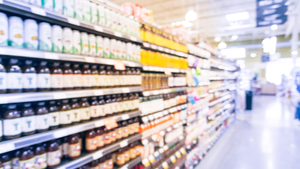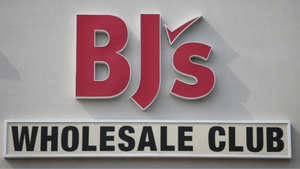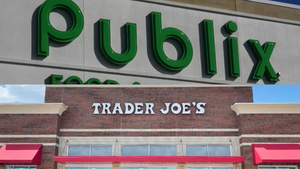Amazon continues to grow its grocery, pharmacy businessesAmazon continues to grow its grocery, pharmacy businesses
CEO Andy Jassy says strengthening its ground delivery network is paying off

Amazon’s massive cloud computing and AI business were the main drivers of the retail giant’s 11.04% revenue growth in Q3, but the Seattle, Wash.-based tech titan said Thursday that it remains focused on its grocery and pharmacy businesses.
While only representing a fraction of Amazon’s $158.9 billion in revenue for the quarter, the company saw big changes in both pharmacy and grocery.
Amazon CEO Andy Jassy said in an earnings call on Thursday that the retailer, which owns Whole Foods Market, Amazon Fresh, and most recently Amazon Grocery, remains focused on “inputs that matter most to customers.”
Those inputs include “really broad selection, low prices, fast and free delivery, and a range of compelling Prime member benefits, including our recent addition to unlimited grocery delivery from Whole Foods Market, Amazon Fresh and local third party grocery partners for $9.99 a month…”
Jassy also touted Amazon’s fuel savings discount of 10 cents a gallon for Prime members at BP Amoco and ampm gas stations.
“In a time when consumers are being careful about how much they spend, we're continuing to lower prices and ship even more quickly, and we can see this resonating with customers as our unit growth continues to be strong and outpace even our revenue growth,” Jassy said.
Jassy noted that Amazon’s annual Prime Big Deal Days sale, held Oct. 8-9, was its most successful, and the retailer is “on track to deliver our fastest speeds ever for Prime members globally,” Jassy said.
Last year, Amazon said in an email that its creation of eight geographic delivery regions across the country aims to get deliveries out faster to customers.
“Previously, if a local Amazon fulfillment center didn’t have the product a customer ordered, it would be fulfilled from other parts of the country, costing the company more and taking longer to get to the customer,” Amazon said in May 2023. “As a result, Amazon made significant changes within its operations network to create eight interconnected regions in smaller geographic areas to better serve customers.”
In the Thursday earnings call, Jassy said Amazon continues to grow its ground delivery network over the last few months, “making hundreds of changes to our U.S. inbound network” and opening more than 15 inbound buildings.
“We’re in the process of significantly changing the way we inbound items into our fulfillment network and subsequently spread them to a regional fulfillment node…” he said. “While it's still relatively early in this re-architecture, we've already improved our ability to spread inventory across our fulfillment centers by 25% year over year, allowing us to have more of the requisite items in fulfillment centers closest to the customer, so we can compile shipments and ship to customers even more quickly.
“As we scale and optimize this new design, we expect these changes will further improve inventory placement, offer faster delivery time, save transportation costs, and enable us to increase units shipped per box.”
Amazon highlighted more logistics changes to its grocery stores on Oct. 10, when the retail giant said it had modified fulfillment centers at 26 Amazon Fresh stores. The change enabled Amazon Fresh to begin selling select products from Whole Foods Market and Amazon.com, the company said.
That follows the ongoing rollout of Amazon Fresh stores across the U.S. that were stalled in 2023. Amazon’s U.S. brick-and-mortar footprint for Amazon Fresh stores has more than doubled to 52 in mid-October from 20 in April, nearly half of which are in California. Meanwhile, Amazon operates 518 Whole Foods Market stores across the U.S., according to Scrapehero.com.
Amazon got a roughly 6% bump in its stock value following the release of its earnings report, climbing to nearly $200 per share by Friday morning. The company reported earnings of $1.43 per share on revenue of $158.88 billion for the quarter, beating consensus earnings estimates of $1.14 per share on revenue of $157.06 billion, according to EarningsWhispers.com.
Jassy said in the earnings call that Amazon is also “energized” about changes to its pharmacy business in the third quarter. On Oct. 21, Amazon announced it plans to open 20 small pharmacies in 2025 that will allow same-day delivery of prescription medications to 45% of U.S. shoppers.
Amazon didn’t reveal the exact locations of the pharmacies, but noted a few of the cities include Boston, Dallas, Minneapolis, Philadelphia, and San Diego.
The megacompany is capitalizing on the struggles faced by brick-and-mortar pharmacy chains across the U.S., like Walgreens, CVS, and Rite Aid.
“Brick-and-mortar pharmacies account for just over 90% of prescription success in the U.S. that require customers to make trips to from large physical venues with much of the selection behind locked shelves, waiting lines for meds, and only to find out about pricing at the point of purchase,” Jassy said. “The largest mail order pharmacies offer delivery in five to 10 business days. We think customers deserve better.”
Jassy noted that even without the rollout of the new satellite pharmacies, Amazon can deliver to 95% of first-time Amazon customers in the U.S. within two business days and 20% of Prime members within 24 hours.
“We believe making it easier for customers to get their medications will improve medication adherence, which we know can directly improve health outcomes,” he said.
About the Author
You May Also Like






